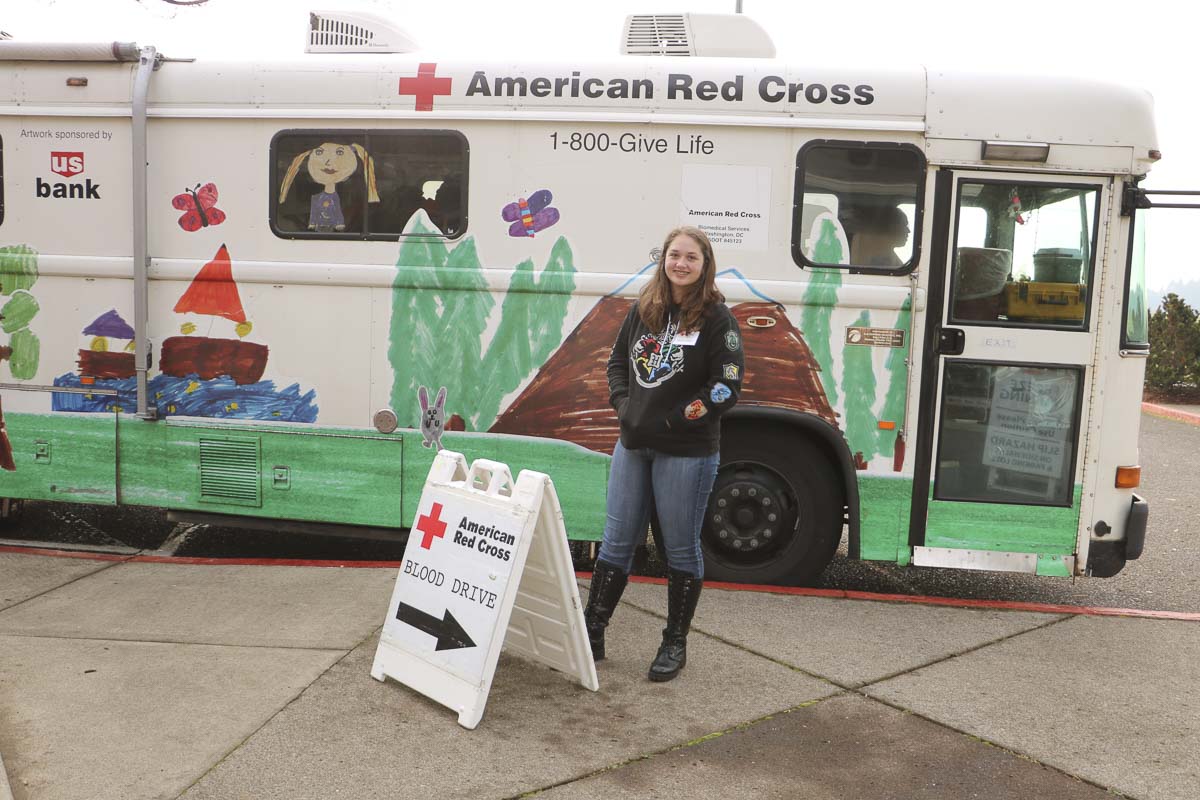Prairie High School is hosting its second donation drive of the year on Fri., Dec. 13; Battle Ground High School will also host a trio of blood donation drives this school year on Dec. 19, Feb. 20, and March 20
BATTLE GROUND — Each year, high schools in the Battle Ground Public Schools district host multiple blood donation drives in partnership with the American Red Cross. Last week, the ASB club at Summit View High School welcomed a Red Cross Bloodmobile to campus.

Students in the high school’s ASB club helped coordinate and advertise their donation event weeks in advance, and the day of the donation drive, served as volunteers to greet donors and help with the check-in process and assist in the “canteen” where donors sit for a few minutes to have a snack and recover after their donation is complete.
Prairie High School is hosting its second donation drive of the year on Fri., Dec. 13, with another scheduled for the spring semester. Battle Ground High School will also host a trio of blood donation drives this school year on Dec. 19, Feb. 20, and March 20. These drives are not only an opportunity for students and staff members to give back and help save lives, but also provide learning opportunities for students who are interested in pursuing careers in the healthcare field after graduation.

Career and Technical Education (CTE) instructor Melissa Levine teaches health science, advanced health science, and family health courses at Prairie High School and is the advisor for the school’s Health Occupation Students of America, or HOSA club. Levine and her students have been hard at work for the past several weeks preparing for the school’s second blood donation drive of the school year.
Levine uses examples from blood donation drives to teach her students about many aspects of working in the medical field. For example, Levine’s students learn how donated blood is broken down into three separate products — red blood cells, platelets, and plasma — and how each of those products can be used to save three lives for each pint of blood donated.
“One of the main goals of CTE programs is to get students career ready,” Levine said. “Hosting and organizing blood donation drives provides a wonderful opportunity for students to learn and gain relevant experience in their future career fields, all while developing crucial social and leadership skills. It’s a great way for students to build their resumes and prepare for that next step after high school.”
Through creating posters and recording video public service announcements advertising the blood drives, Levine’s students gain marketing and public relations skills. For the past several weeks, HOSA students have set up a table in the commons during lunchtime to encourage their classmates to sign up to donate. Levine says this face-to-face interaction teaches listening skills that are vital for medical professionals to master in order to pick up on patient fears that can be quite subtle.
“By listening and hearing what a patient’s concerns are, you can get around potential barriers to effective treatment,” Levine said. “Being empathetic with patients and their concerns is key, and it all starts with learning to be a good listener.”
Despite the fact that students in CTE health classes are benefiting from developing career skills, Levine constantly reminds her students that it’s not about what they can get, but what they can give. And the need for blood donations has been steadily increasing in recent years.
“Historically, Baby Boomers have been the most giving generation when it comes to blood donation,” said David Hunt, account manager for the Red Cross’ Pacific Northwest Blood Services program. “As boomers age and experience increased health problems, they become less and less eligible to donate while simultaneously needing more donated blood themselves. So, we’re relying on the younger generations to try and cover this gap.”
In an effort to increase the number of donations from younger populations, the Red Cross has created a scholarship program to benefit high school students whose schools host donation drives. Scholarships are provided in $250 increments, with the final amount based on the total number of pints of blood that are collected from each school during a given school year.
For example, if Battle Ground High School collects 70 pints of blood at each of its three annual blood donation drives, those 210 pints of blood would earn about $2,500 in scholarship funds for BGHS. Schools have flexibility in choosing how to apply these funds. The money can be used by HOSA clubs to cover the costs of traveling to and participating in regional competitions, or the funds can be used as college scholarships for students who are pursuing a career in healthcare.
“Our goal is for student volunteers to benefit from multiple learning experiences at these donation drives,” Hunt said. “We want to provide a sense of community and encourage giving back. Through their outreach efforts, students learn scheduling and marketing skills, as well as how to represent themselves and sell a worthy cause to their peers. Learning to interact with people with different personalities will benefit them in their professional lives, no matter what field they enter after high school.”
“I’ve learned so much thanks to Mrs. Levine and through working to organize Prairie’s blood drive,” said PHS junior Victoria Martin del Campo. “I’ve been exposed to so many great opportunities just this year alone. Best of all are the connections I’ve made with other students who share my interest in working in the healthcare field and helping others.”
Information provided by Battle Ground Public Schools.




